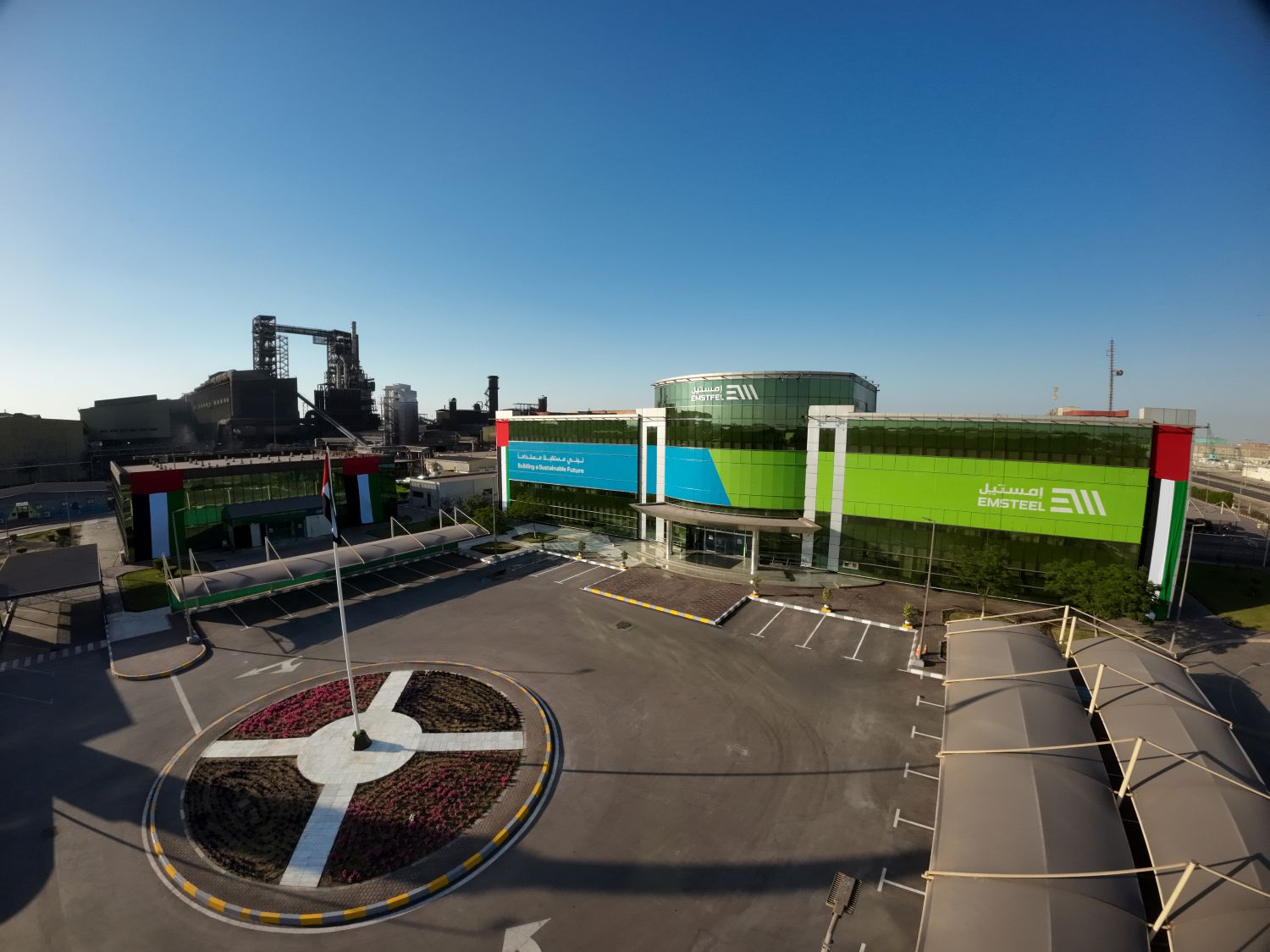

Shaping India’s steel transition: Reflections from ResponsibleSteel’s Policy Convening in Delhi
As India’s steel industry navigates the twin imperatives of growth and sustainability, ResponsibleSteel hosted a policy convening in Delhi earlier this year to explore pathways for steel decarbonisation in India.
Held under the theme “Decarbonisation of India’s steel sector: Dynamics of the energy transition and the role of standards,” the event brought together leaders from government, industry, and civil society to discuss how credible standards, collaboration, and innovation can accelerate India’s transition to low-emission steel. Participants included Tata Steel, JSW Steel, Tata Motors, the Indian Steel Association, WWF, Climate Group, and the Council on Energy, Environment and Water, as well as representatives from the Hydrogen Mission India, the Ministry of Cooperation and the Ministry of New and Renewable Energy.
The convening was opened by the Hon’ble Minister of State for New and Renewable Energy (MNRE), Shri Shripad Yesso Naik, whose keynote address framed the energy transition as both an environmental necessity and a moral responsibility. Reaffirming India’s commitment to achieving net-zero emissions by 2070, he described the transition as “a gift we must leave behind—a legacy of ethical industry.”
He encouraged India’s industry to lead through innovation, highlighting green hydrogen as the cornerstone of the transformation and urging investment in carbon capture, smart furnaces, and Direct Reduced Iron (DRI).
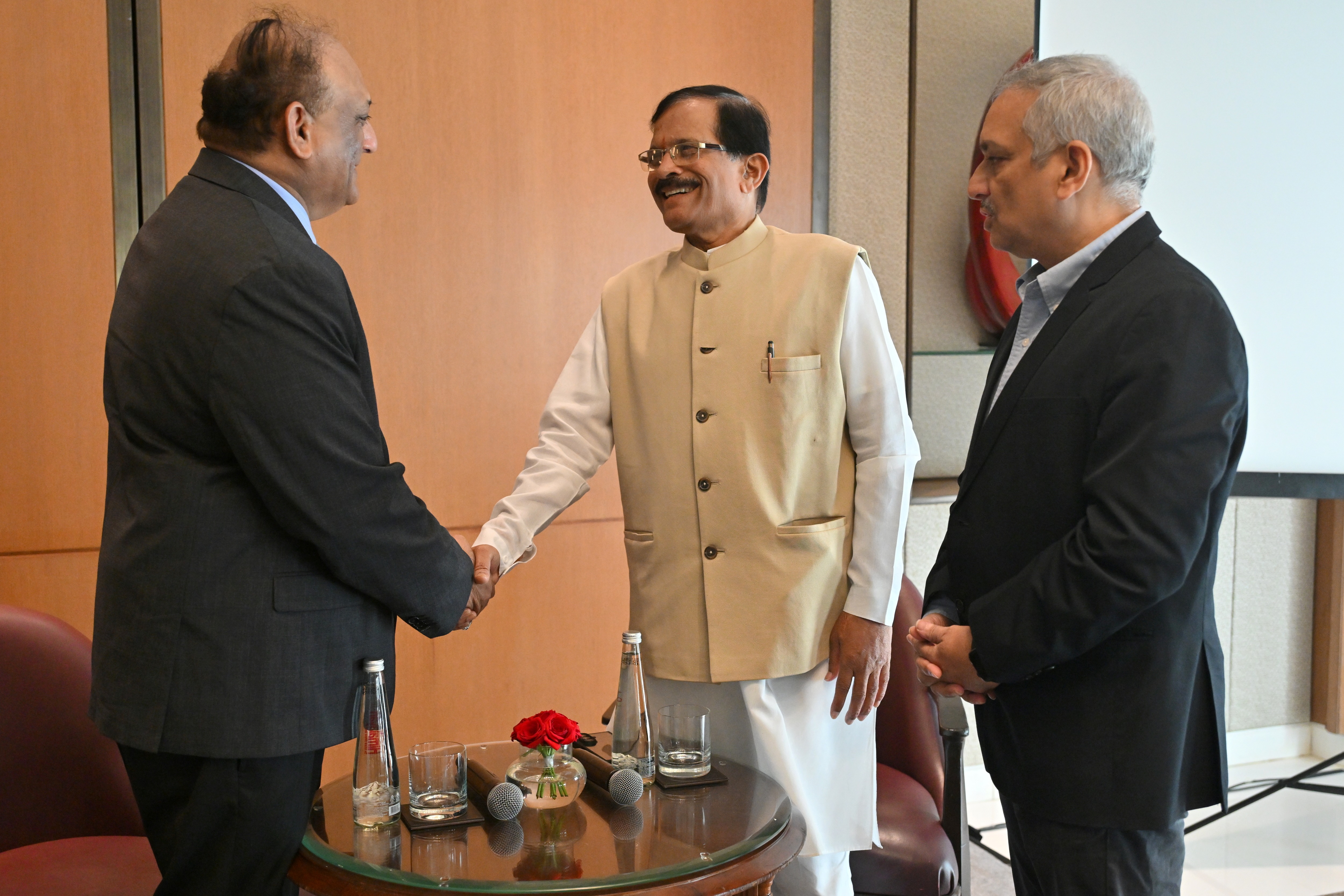
Industry perspectives: Progress and challenges
Senior industry leaders shared insights on their progress, highlighting several areas of development:
- Hydrogen-based pilots are underway with positive results, marking a shift in the future of steel production in India.
- There is increasing integration of renewable energy into steel operations, particularly solar and wind, enabling greater energy autonomy.
- A growing focus on circularity and scrap-based production is emerging to reduce lifecycle emissions.
At the same time, industry participants acknowledged significant barriers to the transition, above all, the high cost of green hydrogen, limited access to clean energy, land availability and grid challenges, and gaps in hydrogen infrastructure.
Policy, incentives, and the role of standards
Discussions also touched upon a clear, globally aligned national framework to support policy, finance, and trade. Shivakumar K., ResponsibleSteel’s Director of Development and Innovation, emphasised the role standards can play as strategic tools that build trust, guide policy and investment, and support industry transformation. By adopting, integrating, or aligning with international standards, national policy frameworks can demonstrate leadership and maintain competitiveness in the global market.
Clear priorities emerged in the discussions, including the need to:
- Ensure interoperability between India’s taxonomy and international standards and policy mechanisms to support trade and global compliance.
- Establish robust certification frameworks to build investor confidence.
- Embed standards within policy narratives linking industry decarbonisation with employment, equity, and regional development.
The convening also discussed policy incentives to accelerate the transition, with representatives from MNRE highlighting ongoing initiatives such as the National Green Hydrogen Mission, which plans to allocate ₹19,744 crore (around $2.2 million) to produce five million tonnes of green hydrogen by 2030.
However, participants stressed that more targeted support is needed, such as tax credits to encourage early adoption of low-carbon technologies.
Toward a responsible, low-emission future
The Delhi convening reaffirmed the growing momentum behind India’s steel transition. It also underscored the essential role of international standards in shaping national policy frameworks and unlocking sustainable finance.
ResponsibleSteel’s engagement with industry stakeholders in India will continue to build on the momentum created in Delhi, laying the groundwork for a responsible, near-zero industry, built on cross-border collaboration.
Learn more about the ResponsibleSteel International Production Standard.
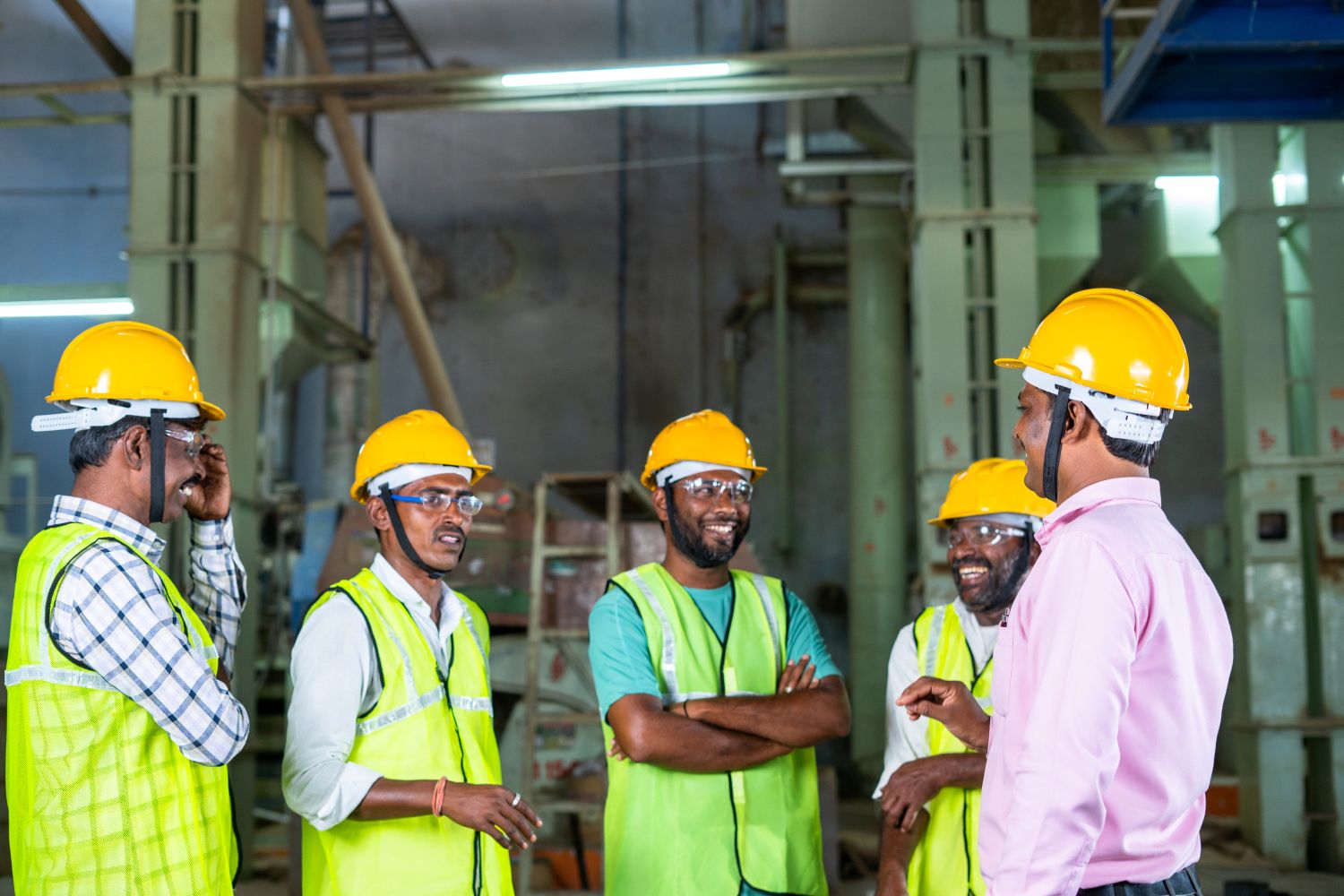

Human rights in steel: ResponsibleSteel's approach
The steel industry is experiencing a significant transformation, with human rights increasingly recognised as a key aspect of that change. International Human Rights Day serves as a reminder of why this is so important. It commemorates the day in 1948 when the United Nations General Assembly adopted the Universal Declaration of Human Rights. This sets out a broad range of fundamental rights, protections and freedoms to which all of us are entitled, regardless of nationality, place of residence, gender or any other status.
According to the latest report by the OECD, the steel industry employs more than six million individuals worldwide. It’s a key pillar of the global economy and a major source of jobs. However, from the extraction of raw materials to the manufacturing of finished steel products, every step of the steelmaking process can pose significant risks to human rights. These risks can arise from unsafe labour conditions, the displacement of Indigenous communities, or environmental degradation that affects local populations. Ensuring steel is produced responsibly, with care and consideration for workers and local stakeholders, requires rigorous and multifaceted mitigation measures to minimise these risks.
That’s why ResponsibleSteel’s International Production Standard incorporates vital requirements to help safeguard workers, communities, and local ecosystems and foster a culture of safety and respect across the supply chain. Already, around nearly 90 sites have achieved ResponsibleSteel Core Site Certification, which assesses steelmakers against more than 300 core requirements. These span key social and environmental aspects of steelmaking, including human rights, health and safety, labour rights, and impacts on local communities. Sites undergo a robust, independent audit process involving documentation review, on-site visits, and extensive engagement with workers and local stakeholders. This isn’t just a box-ticking exercise – achieving certification demonstrates a clear commitment to upholding the full scope of ESG responsibilities.
The Human Rights Principle is central to our International Production Standard because it is a fundamental component to building an industry that is sustainable, safe and grounded in respect. Together, the 13 Principles embedded in our Production Standard ensure that the safety of workers, the wider community and the environment is prioritised at every stage of steel production.
This Human Rights Day serves as a reminder that the steel industry must consider and support the people who power it, and without strong frameworks in place to do so, there can be no true social or environmental progress.
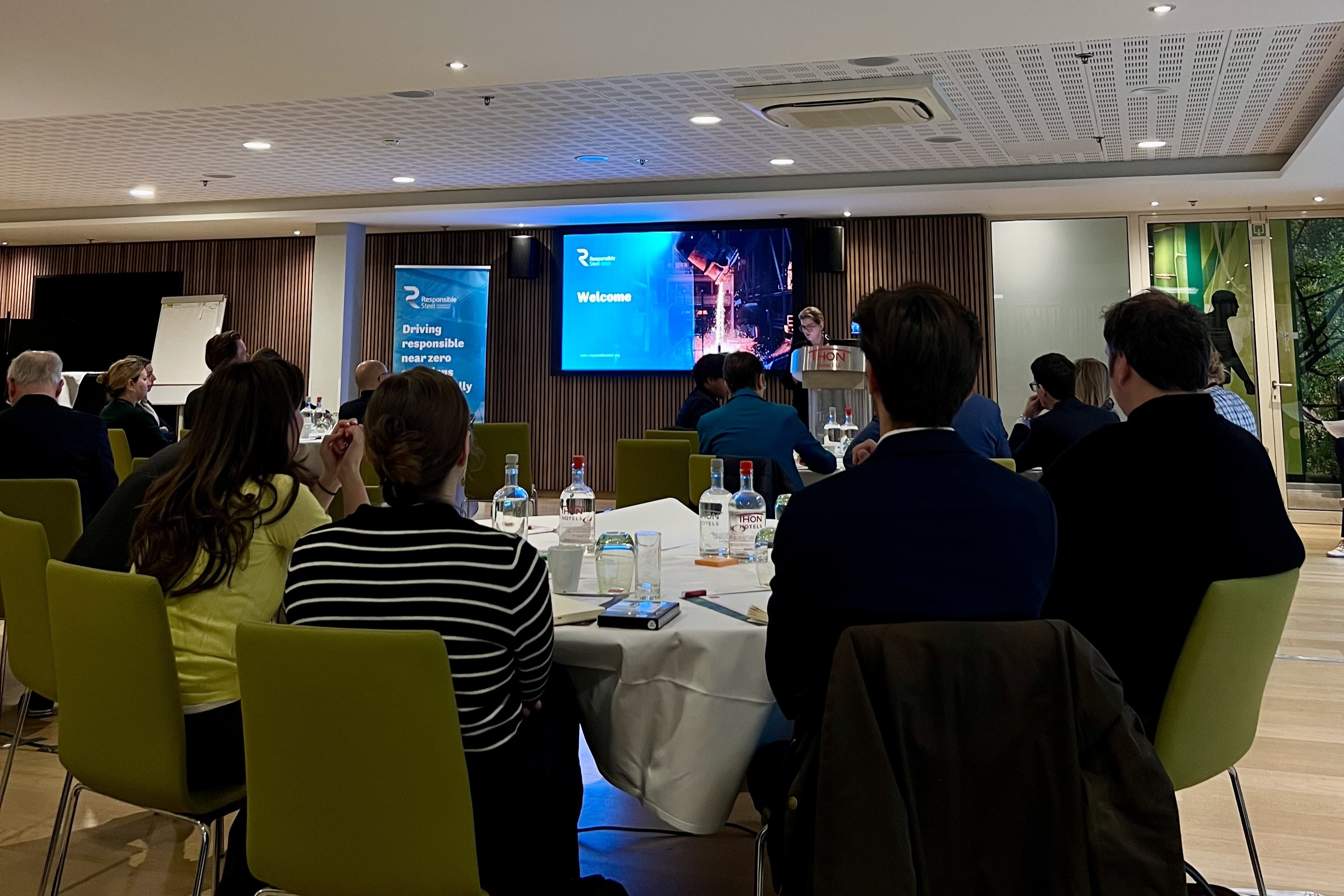

Certification as a catalyst: ResponsibleSteel leads EU dialogue on industrial transformation
Earlier this year, ResponsibleSteel brought together senior representatives from European government institutions, industry, standards bodies, civil society, and finance for a high-level policy roundtable in Brussels to discuss certification as a catalyst for industrial decarbonisation.
Europe is entering a decisive phase of industrial and climate policymaking. With the EU Emissions Trading System (ETS), Carbon Border Adjustment Mechanism (CBAM), and a forthcoming low-carbon steel label, the stakes are high.
The challenge is clear: how can independent, voluntary certification accelerate the transformation of Europe’s steel industry? And just as importantly, how do we ensure these standards work seamlessly with government policies and regulations, aligning climate ambition, safeguarding competitiveness, and building trust across the value chain?
Three key takeaways
Three priorities stood out during the Brussels discussions:
1. Achieving coherence and interoperability
Aligning the EU Emissions Trading System (ETS), Carbon Border Adjustment Mechanism (CBAM), and product labels is critical to avoid policy fragmentation. This ensures that climate performance and market access work hand in hand, rather than pulling in different directions.
2. Building trust through robust assurance and traceability
Strong assurance systems are essential to give businesses and consumers confidence in sustainability data. This helps prevent greenwashing and ensures that claims about low-carbon steel are credible and transparent.
3. Embedding integrity beyond carbon
Europe’s industrial transformation must go further than emissions. It should integrate environmental and social responsibility—from labour rights and biodiversity protection to circularity and resource efficiency—creating a truly sustainable steel sector.
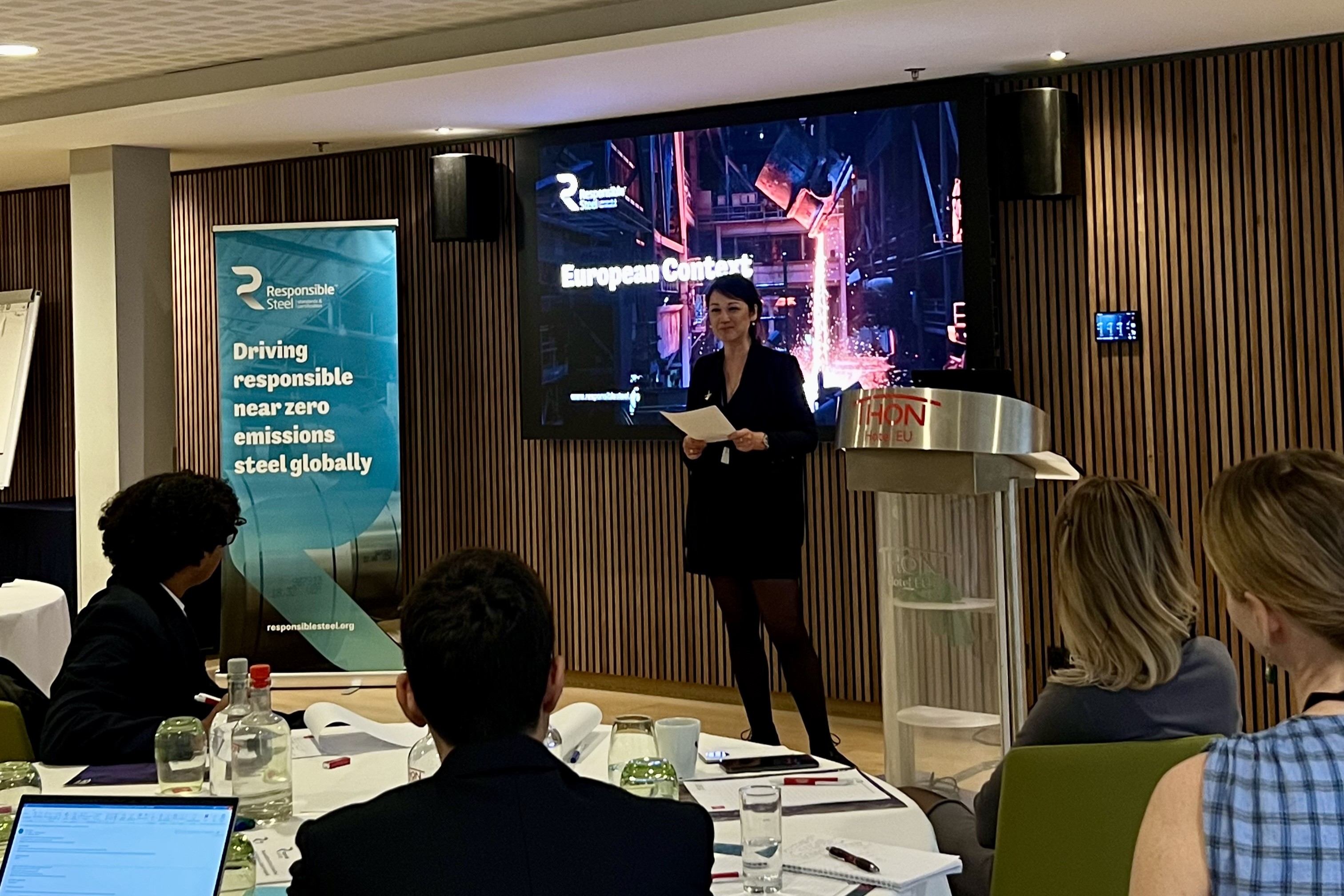
A call for coherence and clarity
The outcome of the discussions was clear. As one participant observed, "Europe doesn't need more bureaucracy—it needs coherence, trust, and credible evidence." This means having a trusted data backbone linking policy instruments rather than multiplying accounting systems. Global certification and assurance frameworks like ResponsibleSteel can provide that backbone, reducing complexity and ensuring comparability across borders.
Recent EU policy developments, such as the expected steel trade defence measure, are prime examples of how trade and climate instruments must evolve coherently. Europe’s policy architecture must be designed to reward verified low-emission steel, ensuring that trade and climate policy pull in the same direction. Certification can serve as the "connective tissue" of industrial policy, translating ambition into verifiable data and helping policymakers and businesses meet the integrity test of Europe's Green Deal.
Going beyond carbon
Another key point made was that Europe must progressively move beyond carbon-only metrics towards integrating environmental and social integrity more broadly. Climate metrics alone aren’t enough. ResponsibleSteel remains the only globally recognised standard that integrates emissions, labour, biodiversity, and governance into one assurance model. A holistic approach ensures Europe’s industrial transition is not just green, but fair.
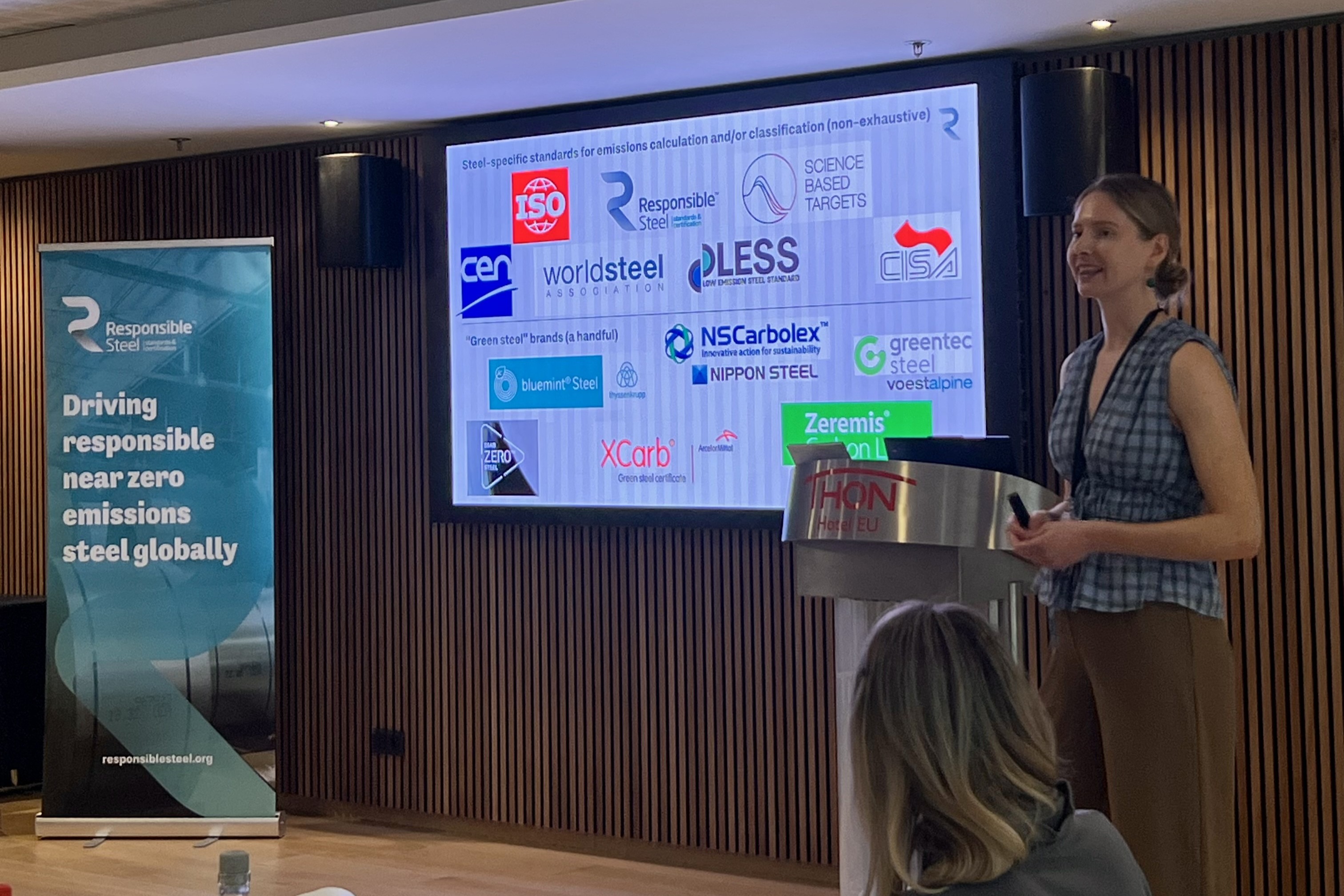
Certification: Turning intent into impact
"Certification is no longer a technical afterthought—it's what turns climate intent into credible, measurable impact," said ResponsibleSteel CEO Annie Heaton. "The roundtable confirmed that credible, interoperable standards are now essential for Europe’s industrial transition. ResponsibleSteel's agreement with the Brussels-based Low Emission Steel Standard (LESS), announced at COP30, was a major milestone on the road to greater alignment.”
With new trade-defence measures on the horizon, ResponsibleSteel will continue working with policymakers, industry, and civil society to make certification a cornerstone of Europe’s climate-industrial architecture.
Because only when integrity and ambition move together—through coherence, credibility, and verified performance—can Europe’s industrial transition truly succeed.
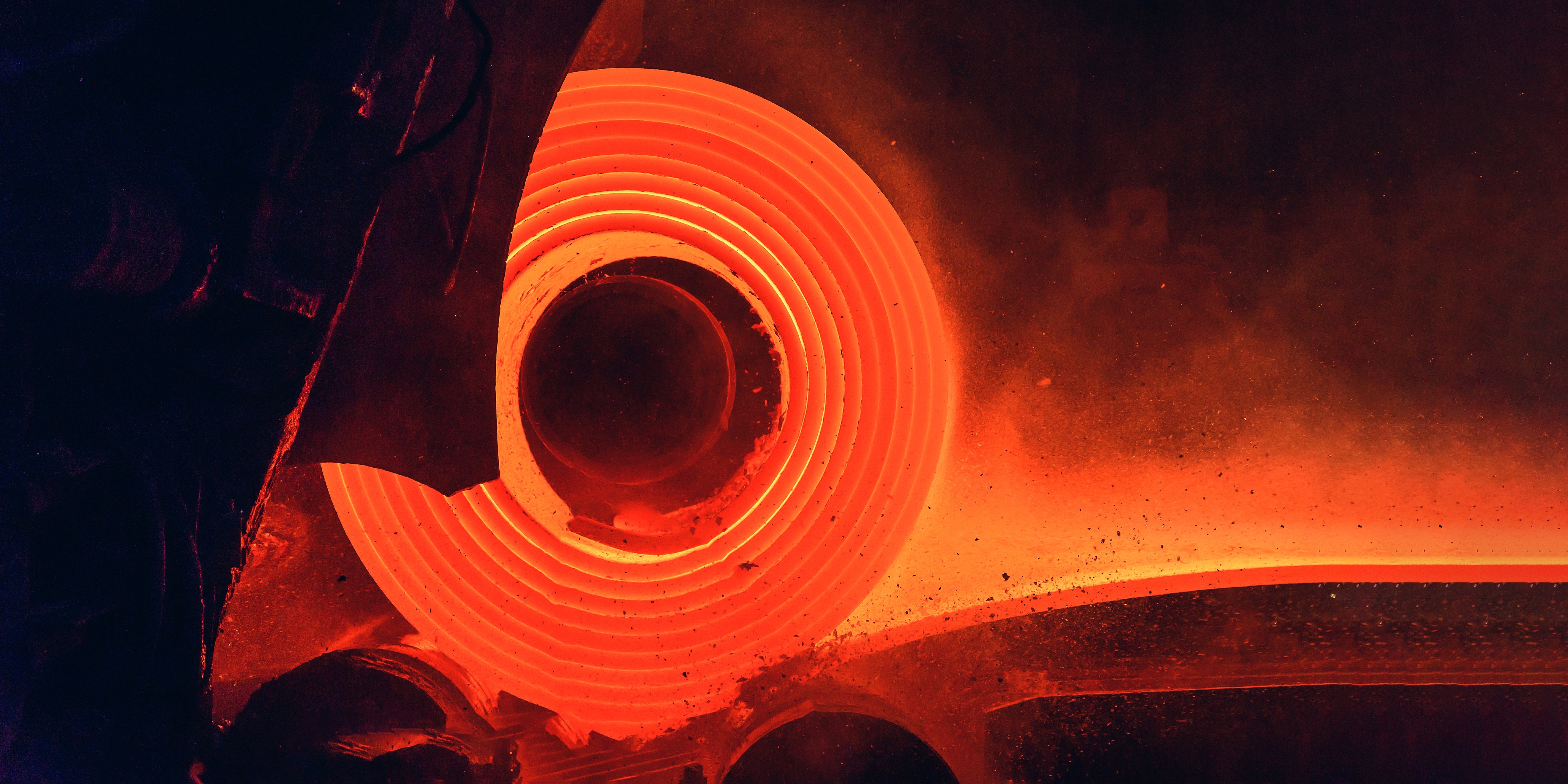

Public Statement: The EU Label for Steel Should Build on the Sliding Scale Approach
As announced in the Clean Industrial Deal, the European Commission is expected to put forward an EU label for steel on 10 December as part of the Industrial Accelerator Act. This label aims to incentivise and reward investments in the decarbonisation of steel production. To succeed, the EU must establish a clear, credible, and uniform framework that incentivises genuine and additional greenhouse gas (GHG) emission reductions across all production routes while preserving industrial competitiveness. The concept of the ‘Sliding Scale’, also known as ‘Steel Decarbonisation Scale‘, initially proposed by the International Energy Agency (IEA) and adopted by ResponsibleSteel, LESS, and CISA, offers a robust, technology-neutral, and globally inclusive approach which aligns with the WTO TBT Principles. This paper argues for the adoption of the Sliding Scale as the basis for the European Label for Steel, ensuring a fair and effective transition of the steel industry to near-zero emissions steel.
The Sliding Scale: A Fair and Effective Framework for Europe
The Sliding Scale evaluates steel production based on both GHG intensity and the share of scrap used. This dual approach ensures that decarbonisation progress is recognised and rewarded, independently of the production route or scrap input.
By contrast, a purely footprint-based approach fails to guide the industry toward near-zero emissions. Footprint-based specifications are designed to reduce emissions at the product level, but this won’t lead to global GHG reduction if achieved by higher recycled content alone as doing so would simply shift scrap and emissions from one product, project or region to another (see report “The role of scrap in steel decarbonisation” by the Institution of Structural Engineers and the ”Civil Society Response to GSCC Steel Standard” signed by 12 NGOs which outline this in a compelling way). In other words, a footprint-based approach would merely outsource the decarbonisation of primary production to third countries and make the EU steel industry more vulnerable and less resilient.
Why the Sliding Scale Works
The Sliding Scale encourages all producers, primary (ore-based) and secondary (scrap-based), to decarbonise. For secondary producers using the Electric Arc Furnace (EAF) route, it incentivises measures such as increasing the use of green electricity and decarbonising hot-forming processes. These improvements are less capital-intensive than decarbonising ore-based primary steelmaking, allowing EAF producers to achieve better performance classes faster. This is clearly demonstrated by the first certificates awarded under LESS, where secondary steel routes achieved substantially better classifications than primary steel routes, and by the first steel certification by ResponsibleSteel, which was awarded to an EAF facility with 57% scrap inputs.
The EU label should include upstream scope 3 emissions (raw materials) from the start, thereby ensuring that "near-zero steel" is truly decarbonised across the entire value chain. This prevents carbon leakage and ensures that decarbonisation efforts are not undermined by shifting emissions from one part of the value chain to the other.
The Need for Decarbonised Primary Steel in Europe
Europe cannot rely on scrap-based production alone. The availability of high-quality scrap is limited, and this will become even more of an issue as demand rises. When EAF operators cannot source enough high-quality scrap due to qualitative constraints (e.g. the level of trace elements present), they require primary iron inputs (e.g. direct reduced iron). Consequently, the distinction between primary and secondary steel production will be increasingly blurred going forward. The Sliding Scale approach takes this into account by attributing suitable emission thresholds depending on the scrap content.
If Europe fails to decarbonise its primary steel production, it risks increasing its dependency on imports, which are often from regions with higher average emissions, while undermining its own climate commitments.
A European Label for Steel
In order to increase demand for low-emission steel, Europe needs a Steel Label that provides buyers with clear, comparable and actionable information. The Sliding Scale offers the ideal foundation for such a label:
- It incentivises all producers – primary and secondary – to decarbonise.*
- It preserves Europe's industrial competitiveness by ensuring that primary and secondary steel production decarbonise and remain viable in Europe.
- It supports the EU’s and global climate goals by driving real emissions reductions, not just scrap redistribution.
- It provides transparency on both emissions intensity and scrap share, enabling informed purchasing decisions.
International Perspective
The Sliding Scale approach was developed by IEA when proposing low-carbon steel and cement definitions for policies to support decarbonisation. These principles have since been endorsed and further refined by G7 members and the Climate Club, who affirmed the need for globally harmonised, yet flexible, emissions standards to accelerate industrial decarbonisation.
Building on this foundation, the Sliding Scale was adopted by ResponsibleSteel, the Low Emissions Steel Standard (LESS), and the China Iron and Steel Association (CISA), which together represent around 60% of global steel production. These are all part of the Steel Standard Principles-Initiative, which aims to align steel standards and create transparency in the market. ResponsibleSteel is actively working on interoperability and potential equivalency mechanisms with LESS and CISA to enable efficient low emissions steel markets. This enables public and private buyers to make informed, sustainable procurement decisions based on reliable and comparable data.
Demand-Side Measures and Policy Alignment
A Steel Label is only effective if paired with strong demand-side policies. Europe must actively foster lead markets that position low-emission steel as the standard choice for both public and private procurement. This requires aligning climate and industrial policies to drive demand in key sectors, such as construction, infrastructure, defence, and automotive, where steel plays a critical role. By embedding the Sliding Scale into sector-specific regulations, incentives, and public procurement criteria, Europe can create a stable, predictable market for clean steel, ensuring that its industry remains resilient and future-proof in a decarbonised global economy.
Conclusion: A Strategic Path Forward
The Sliding Scale provides a technology-neutral framework for incentivising genuine GHG emission reductions in steel production. LESS and ResponsibleSteel serve as prime examples of its successful implementation - transparent, operational standards that classifies steel based on emissions intensity and scrap share. Both systems account for upstream scope 3 emissions and are working together to ensure interoperability. By incorporating the Sliding Scale approach into the Industrial Accelerator Act and future steel policies, Europe can establish a coherent, equitable, and efficient framework for transitioning to a climate-neutral steel industry. This will accelerate decarbonisation while safeguarding jobs, strengthening industrial resilience, and upholding climate integrity.
*Includes primary producers (<25% scrap), secondary producers (>70% scrap), and producers which aren't currently classified as either (25-70% scrap).
Download the statement here.
.png)


November 2025 Newsletter
The November edition of the ResponsibleSteel Newsletter is out!
ResponsibleSteel has had an important month, marked by major progress in advancing alignment on low-emission steel. At COP30 in Belém, we were proud to have announced landmark agreements with the China Iron and Steel Association (CISA) and Europe’s Low Emission Steel Standard (LESS) to strengthen international comparability and support credible pathways for decarbonising steel worldwide. The partnerships represent an important step toward credible, aligned, and internationally recognised pathways for decarbonising steel.
Also in this newsletter is a reminder that voting is now open for the Business Board Director election. This is a key moment for ResponsibleSteel Business and Civil Society Members to help shape our governance, ensure multistakeholder representation continues to guide our strategic direction, and guarantee that the Board reflects the full diversity of our membership.
In this month’s Newsletter, you’ll also find:
· Highlights from COP30 and details on our new partnerships with CISA and LESS
· Reminder to vote for our new Business Board Director
· An introduction to our new ResponsibleSteel Ambassadors
· Key developments from the Standard Revision process
· An invitation to join upcoming working group meetings
… and more.
Read the full update here.
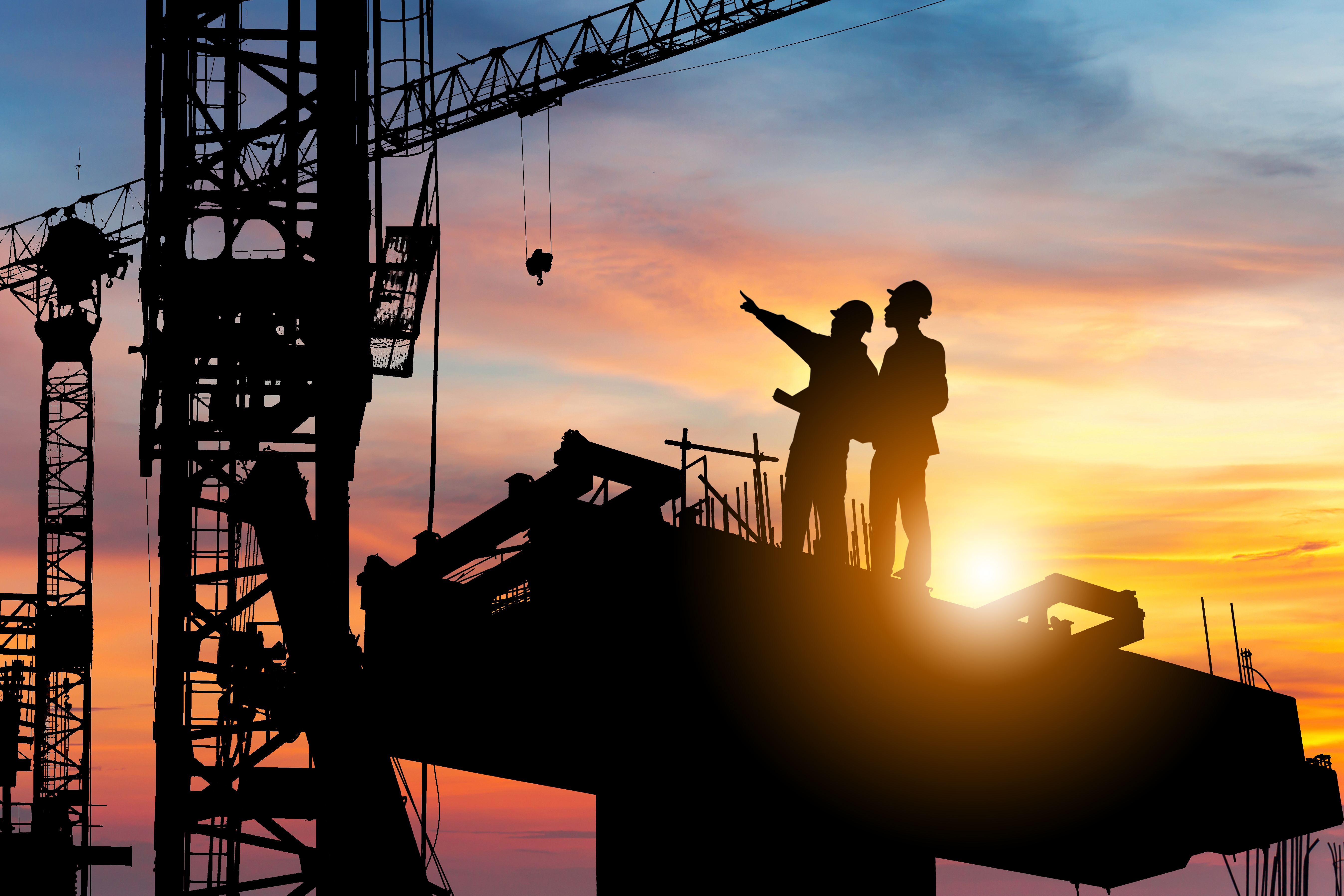

Do you have something to contribute to the steel sustainability discussion? Share your insights and experiences with us
We’re inviting ResponsibleSteel members and partners to contribute guest blogs for publication on our website. This is a great opportunity to share your work, highlight progress, and be part of the global conversation around responsible steelmaking.
These blogs are an exclusive opportunity to provide thought leadership and insight. We’re looking for contributions that explore key issues like decarbonisation, human rights, supply chain responsibility, innovation, risk mitigation, and other sustainability challenges and solutions shaping the future of steel.
If you’re working on sustainability in the steel value chain, have lessons to share from your experience, or simply want to spark discussion on a topic that matters to the industry, we’d love to hear from you. This is not about promoting a particular technology, company, or agenda, but about showcasing ideas, expertise and impact in an open, engaging way.
What we’re looking for:
- Blog posts between 400 and 600 words
- Original content, written in a clear, accessible style
- Real stories, fresh ideas, and practical insights
- A professional tone that aligns with ResponsibleSteel’s mission
If you’re still not sure what type of content to contribute, take a look at a few of our recently published articles from ResponsibleSteel members:
- Karmanterra: Biocarbon in steelmaking
- The future of steel sustainability: In conversation with ArcelorMittal's Philippe Aubron
- ResponsibleSteel: A key pillar of Maxion Wheels’ Responsible Sourcing Policy
- SKF: Advancing decarbonisation through ResponsibleSteel
Every submission will be reviewed by our team, and we’ll work with you to make sure it supports ResponsibleSteel’s mission and values and reaches the right audience. Contributors will be fully credited and featured across our channels. Please note, all opinions expressed within guest blogs are of the author alone, and do not reflect the views of ResponsibleSteel.
If you’re interested, take a look at our Editorial Guidelines and send your draft or idea to our membership team.
Let’s keep the conversation going. We look forward to hearing from you.
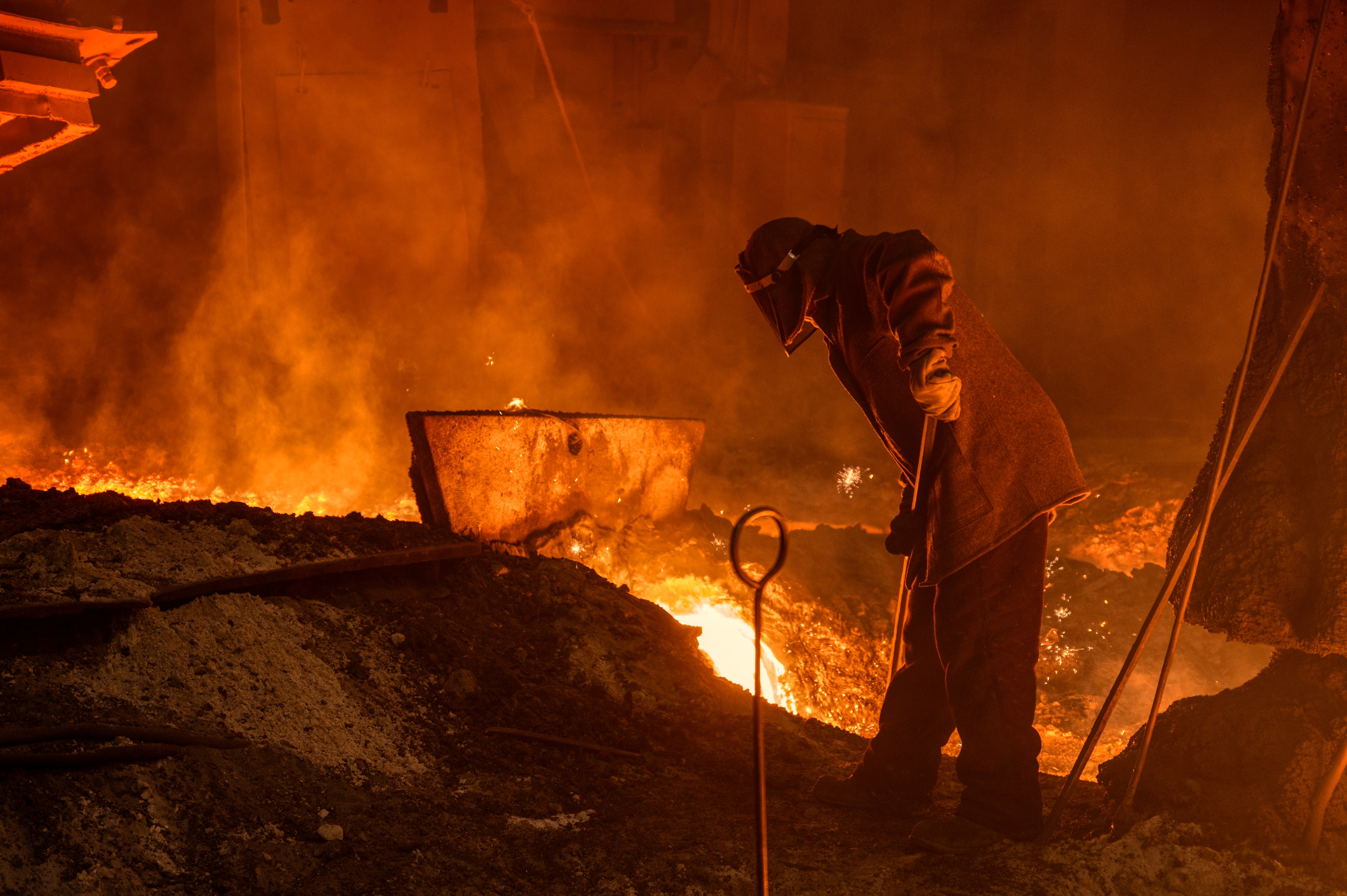

Landmark agreements link majority of world’s steel production under global and regional standards for low-emission steel
Amid industry calls for greater consistency and clarity across carbon standards at COP30 in Belém, Brazil, ResponsibleSteel announces partnerships with two standards – Europe’s Low Emission Steel Standard (LESS) and China’s Low-carbon Emission Steel Standard (C2F Steel) – to advance global comparability and trade in low-emission and near-zero steel, covering some 60%* of the world’s steel production.
- ResponsibleSteel’s landmark agreements with Chinese and European steel standards bodies extend a common approach to GHG measurement and classification to cover over half of global steel production.
- These partnerships connect major producers, consumers, and innovators across the global steel value chain under interoperable definitions of low-emission steel, accelerating the sector’s path towards deep decarbonisation.
- By aligning some of the world’s largest steel industries, the agreements pave the way for greater investment, green procurement, technology exchange, and international collaboration in sustainable steelmaking.
The two agreements are agreed between ResponsibleSteel and the China Iron and Steel Association (CISA), and between ResponsibleSteel and the Brussels-based Low Emission Steel Standard organisation (LESS aisbl). Together, membership of the three organisations represents around 60% of the world’s steel production.
With steel one of the most significant industrial contributors to climate change, accounting for around 7-9% of global greenhouse gas (GHG) emissions, the agreements strengthen efforts to facilitate trade and investment in decarbonised steel while ensuring consistency and credibility in sustainability standards worldwide.
Achieving meaningful progress in decarbonisation requires collaboration across borders and standards. Crucially, today’s agreements send a strong signal to governments globally of the far-reaching consensus around the ‘scrap-variable’ approach to low-emission steel classification, which acknowledges that the availability of recyclable steel will be limited for a considerable time to come and is designed to drive decarbonisation across all technologies.
Such an approach, already recognised by the G7 and incorporated into international standards, is a practical, science-based solution that supports the global transition to low-emission steel without compromising integrity. It:
- Prevents fruitless competition for a limited scrap supply.
- Incentivises decarbonisation across all steel production routes.
- Promotes technology-neutral solutions in line with international trade rules and helps to reduce creating unnecessary barriers to trade.
ResponsibleSteel’s GHG accounting methodology and classification system are part of its broad ESG spectrum ‘International Production Standard’, developed over several years in a transparent multistakeholder process through input from over 70 business and civil society organisations and 180 individuals – including steelmakers with blast furnace (BF) and electric arc furnace (EAF) operations.
Today, around 90 sites have achieved ResponsibleSteel certification around the world, and the organisation remains the only multistakeholder standard for broad-spectrum steel sustainability.
"ResponsibleSteel is building a global framework to enable comparability to underpin a global market in low-emission steel. A majority of the world’s steel production capacity now has the potential to use mechanisms for equivalency to define their low-emission and near-zero emission steel. These agreements pave the way to the first real examples of interoperability between standards – a breakthrough development which will provide clarity for steel producers, buyers, investors and policymakers."
- Annie Heaton, CEO, ResponsibleSteel
At the heart of the agreements is ResponsibleSteel’s ‘Framework for Credible Interoperability,’ which sets out principles to enable carbon metrics to be translated between standards to support credible GHG claims. Using this framework, ResponsibleSteel will work with the two organisations to develop conversion tools to enable stakeholders to claim equivalency of their decarbonisation progress under different schemes.
"Collaboration is essential for harmonising greenhouse-gas-emission standards and accelerating the decarbonisation of the steel industry. This agreement represents a landmark step toward that goal. ClSA's decision to cooperate with ResponsibleSteel is attributed to our mutual adherence to steel-standard principles, the proven results both organisations have achieved in this field, and our shared commitment to credible, science-based solutions. We are looking forward to working closely with ResponsibleSteel to advance the objectives of this agreement."
- Jiang Wei, Chair, China Iron and Steel Association (CISA)
"LESS is proud to partner with ResponsibleSteel on this groundbreaking initiative. Our shared commitment to credible, science-based solutions will bring much-needed clarity to the comparison of GHG emissions and transparency about decarbonisation progress in steel production. This agreement is a critical step toward building global markets for low-emission steel and accelerating the industry’s transition to net zero."
- Carmen Ostwald, Secretary General, LESS aisbl
This work also exemplifies the Steel Standards Principles (SSPs), launched at COP28 to foster alignment among greenhouse gas standards. Since then, ResponsibleSteel has worked closely with over 60 SSP signatories, playing a leading role in advancing interoperability.
"As two dominant steel-producing regions, China and Europe have a vital role to play in driving steel industry decarbonisation. ResponsibleSteel is proud to play its part as the global, multistakeholder broker using its trusted standard to help them achieve genuine decarbonisation of their steel industries."
- Gerry Tidd, Chair, ResponsibleSteel Board of Directors
A globally interoperable system is essential to enable markets for low-emission steel to thrive. Both agreements pave the way to the creation of credible interoperability mechanisms between the greenhouse gas metrics of ResponsibleSteel – the world’s leading full-spectrum sustainability standard for steel – and each regional standard.
For more information, contact:
Savannah Hayes, Communications Manager, communications@responsiblesteel.org, +44 7588 785909
*Estimate based on 2024 World Steel Association total crude steel production against production of ResponsibleSteel member sites with certification, an estimated average capacity utilisation rate among non-certified ResponsibleSteel member sites and LESS members, and an assumption that CISA’s members make up 90% of Chinese steel production.
Supporting quotes
“ArcelorMittal strongly supports the collaborative effort between ResponsibleSteel, CISA, and LESS to advance interoperability among emerging standards. Establishing a unified framework for international reference standards is essential to accelerate the decarbonisation of the steel industry and ensure transparency and credibility across global markets. We believe this initiative will foster trust, drive innovation, and enable the industry to meet its climate commitments with consistency and rigor." - Philippe Aubron, Head of Global Automotive, ArcelorMittal
"The signing of this memorandum of cooperation marks an important milestone for China's steel industry in actively practicing green development principles and deeply integrating into global low-carbon emission governance. We will seize this opportunity to jointly promote the international mutual recognition of low-carbon emission steel standards, build a green supply chain system, and contribute Chinese wisdom and strength to the low-carbon transformation of the global steel industry." - Wang Qiangmin, Chief Carbon Neutrality Representative, China Baowu Steel Group
“This partnership is a game-changer for our industry. By aligning our standards, we are not only strengthening LESS and ResponsibleSteel but also shaping a global consensus on what defines low-emission steel. ArcelorMittal is proud to support this initiative, which will accelerate our collective journey toward a sustainable steel industry." - Frederik Van de Velde, CEO, ArcelorMittal Belgium
"Harmonised standards are the backbone of meaningful change in steel production. This tool will empower companies to adopt sustainable practices with confidence while giving customers the transparency they need to make informed decisions. Mutual recognition between standards is key to building trust in the marketplace." - Gunnar Groebler, CEO, Salzgitter AG and Chairman of the Board of LESS
"These agreements represent a significant stride toward globally aligned and harmonized standards for low- and near-zero-emission steel, which are critical for advancing decarbonization across the sector." - Riccardo Savigliano, Chief, Energy Systems and Decarbonization Unit, United Nations Industrial Development Organisation - UNIDO
“Unified, credible, and interoperable standards are vital for making informed sourcing decisions in complex, globalized value chains like ours. These agreements will deliver much-needed clarity and consistency to the market, strengthening the foundation for real climate action in the steel sector.” - Susanne Larsson, CFO & CSO, SKF
"Carbon emissions from steel are a key challenge in the real estate sector. As the first real estate company in China to join Climate Group’s SteelZero initiative, Hang Lung Properties welcomes and applauds this announcement. Incentivizing decarbonization across all steel production routes and establishing credible, interoperable standards will speed production of low carbon steel and add clarity and momentum to demand-side initiatives in China and elsewhere.” - John Haffner, Deputy Director – Sustainability, Hang Lung Properties
"Aligning global standards for low-emission steel is essential to enable credible sourcing and sustainable trade at scale. At Schneider Electric, we've learned that decarbonizing supply chains requires harmonized, high-integrity standards that ensure transparency, traceability, and measurable impact. We're committed to building industry coalitions, fostering long-term partnerships, and driving the standardization needed to accelerate sustainable innovation." - Esther FINIDORI, Chief Sustainability Officer, Schneider Electric
"This announcement is a powerful example of what collaboration can achieve. By shaping standards under a common framework, these organisations are paving the way for greater alignment in how we measure and classify emissions in steel - a sector that is critical to global decarbonisation. Climate Group congratulates ResponsibleSteel, CISA, and LESS on this innovative approach, which promises to accelerate progress toward a shared goal: reducing carbon emissions across the steel industry worldwide." - Mike Peirce, Executive Director, Systems Change, Climate Group
"SteelZero was set up by Climate Group and ResponsibleSteel to accelerate demand for net-zero steel, and this announcement is a vital step towards that goal. Steel buyers looking to procure low-carbon materials need clarity and comparability at a time when multiple decarbonisation standards are emerging. Reducing barriers to measurement and progress is essential to help companies make informed choices about where to buy their low-emission steel. This collaboration promises to deliver that clarity." - Sameen Khan, Senior Manager, Steel, Climate Group
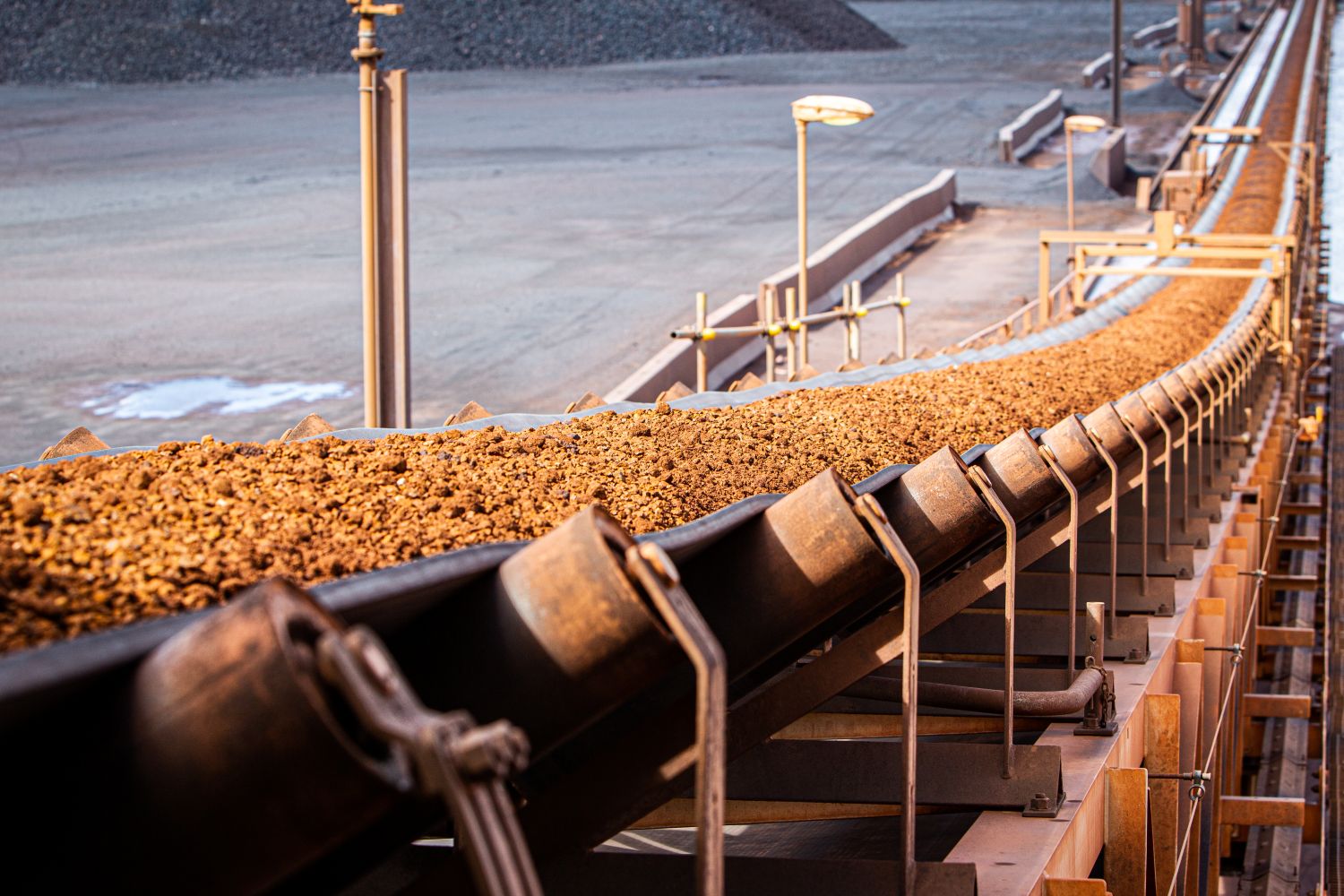

October 2025 Newsletter
ResponsibleSteel has had a busy month, with important progress across our standards, policy, and membership activities. Earlier this month, ResponsibleSteel convened steelmakers, customers, NGOs, EU policymakers, standards bodies, and auditors in Brussels to exchange perspectives on how to accelerate low-emission steel production and strengthen responsible practices across the sector. The discussions were highly constructive and will inform our forthcoming policy paper – thank you to all who took part.
A reminder that nominations are still open for a Business Board Director, offering our members the chance to play an active role in shaping ResponsibleSteel’s strategic direction and ensuring diverse perspectives are represented.
In this month’s newsletter, you’ll find:
• Insights from our Brussels policy convening
• Details on the open Business Board Director position and how to nominate
• Updates on the ResponsibleSteel Standard Revision
• A new blog explaining the certification process
• A call for member-authored blogs
• A warm welcome to PDI Tanzania, our newest member
• An opinion piece by Policy Advisor Yana Popkostova on the role of standards in the green transition
…and more.
Read the full newsletter here.


Update on the Standard Revision
Since the launch of the first Standard in 2019, ResponsibleSteel has established itself as a leader in steel sustainability. As the global industry landscape continues to evolve, driven by shifting regulations and reporting requirements, technological innovation, and a growing need to address social and climate issues, the Production Standard must also evolve.
In 2024, ResponsibleSteel began the standard revision process for the ResponsibleSteel International Production Standard (V2.1.1) in accordance with ResponsibleSteel’s Standards Development Procedures. So far, discussions have commenced on aspects of Principle 10: Climate Change and GHG Emissions, Principle 6: Labour Rights, and Just Transition. The revision will also incorporate urgent revisions and provisional interpretations.
The most recent working group meeting on Principle 10 was held on 21 October, followed by a Technical Advisory Group (TAG) meeting a week later. Discussions focused on corporate alignment with the Paris Agreement and corporate-level climate transition plans (10.1), corporate climate-related financial disclosure (10.2), site-level GHG emissions reduction targets and planning (10.5) and GHG emissions disclosure and reporting (10.7). A survey was also recently sent to ResponsibleSteel business members to collect data on how they currently measure and disclose climate-related information to inform the discussions.
In the coming weeks, the Secretariat will consolidate the outcomes from these meetings into a proposal for changes to the Production Standard to be reviewed by the working group and TAG.
The Just Transition working group has been exploring the drivers for inclusion and is considering whether integration of this topic into the Production Standard (as part of Principle 4) is appropriate. The TAG for social topics has also begun reviewing the outcomes of last year's working group on annual leave (related to Principle 6).
Take a look at a few of our key resources to find out more about the revision process:
ResponsibleSteel members are invited to join working group meetings, even if they haven’t participated previously. Meeting minutes and presentations from previous discussions can be found under Resources.
We are always seeking broader engagement, particularly from those with experience/expertise surrounding social topics. By contributing to the revision process, members have a unique opportunity to contribute to a global standard that is shaping the future of the industry, not just for steelmakers, but for the entire value chain.
If you would like to be involved or have any questions, please contact standards@responsiblesteel.org. Stay tuned for further standard development updates on our Standards Development page.
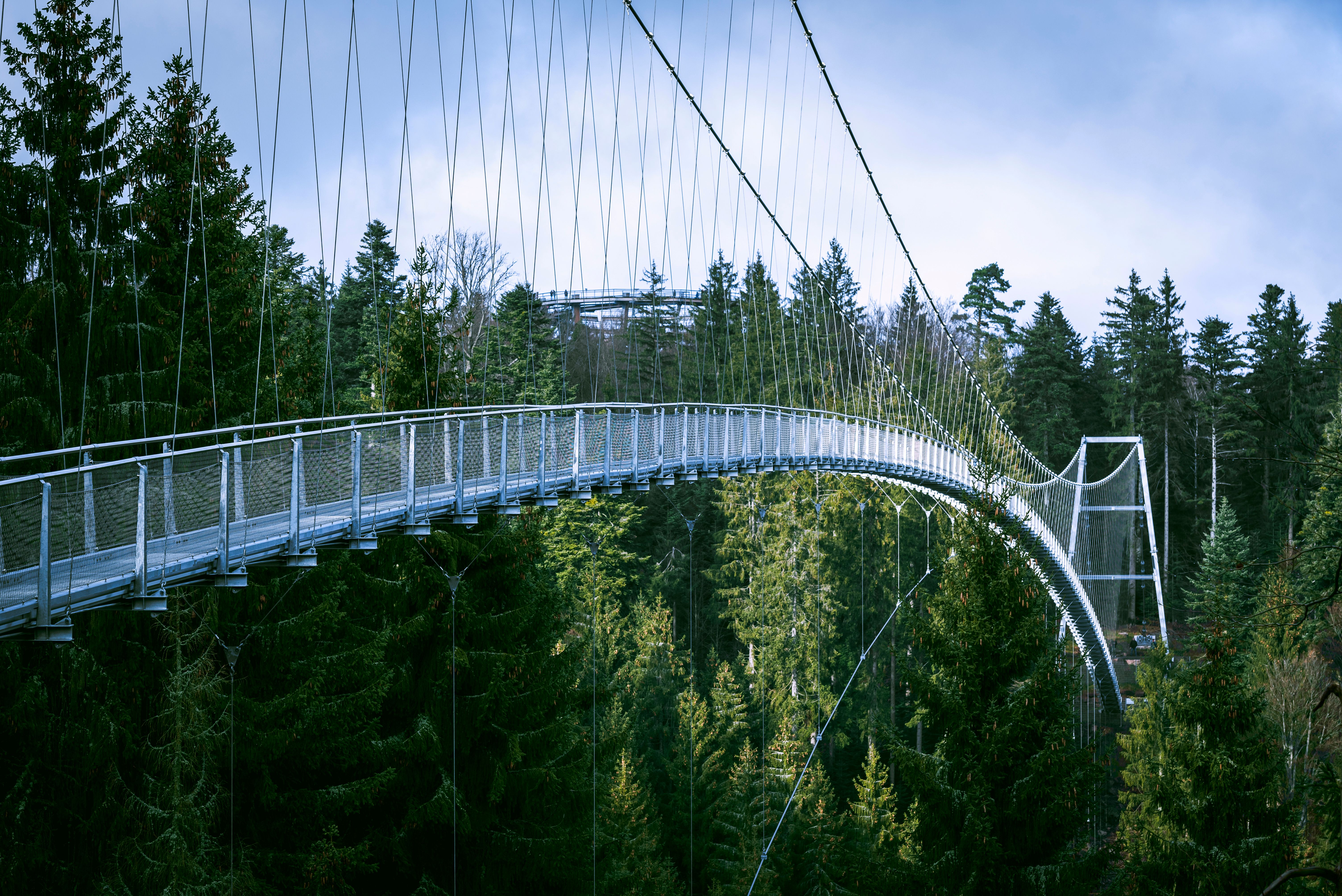

Nominations open for a new ResponsibleSteel Board Director
Who do you see shaping the future of sustainable steel? ResponsibleSteel is currently seeking nominations from our members for a position on our Board of Directors in the Business category.
The Board plays a vital role in ensuring ResponsibleSteel delivers impact, maintains the integrity of our Production Standard, and serves the needs of our global membership. This is a valuable opportunity for a representative of one of ResponsibleSteel’s business members to contribute to the strategic leadership of our organisation and help shape the future of the steel industry.
Our Board brings together expertise from across the steel industry, environmental and social issues, governance, and standard-setting, and upholds best practice in multi-stakeholder decision-making. It is composed of four Business, four Civil Society, and three Independent Directors. Key decisions on our standards and assurance programme, finances, policies, and procedures are made by our Board of Directors.
We strongly encourage nominations not only from steel-making companies, but our multi-stakeholder governance is one of the core strengths of ResponsibleSteel. All ResponsibleSteel members (including Associates and Civil Society Members) are invited to submit nominations, provided the nominee would sit within the Business Membership category. We particularly encourage nominations of representatives from steel customers and materials suppliers.
Take a look at the candidate pack, role description, and nomination form below to find out more about the position and to nominate a representative:
We look forward to receiving your nominations!
The deadline for nominations is Friday, 7th November 23:59 GMT.
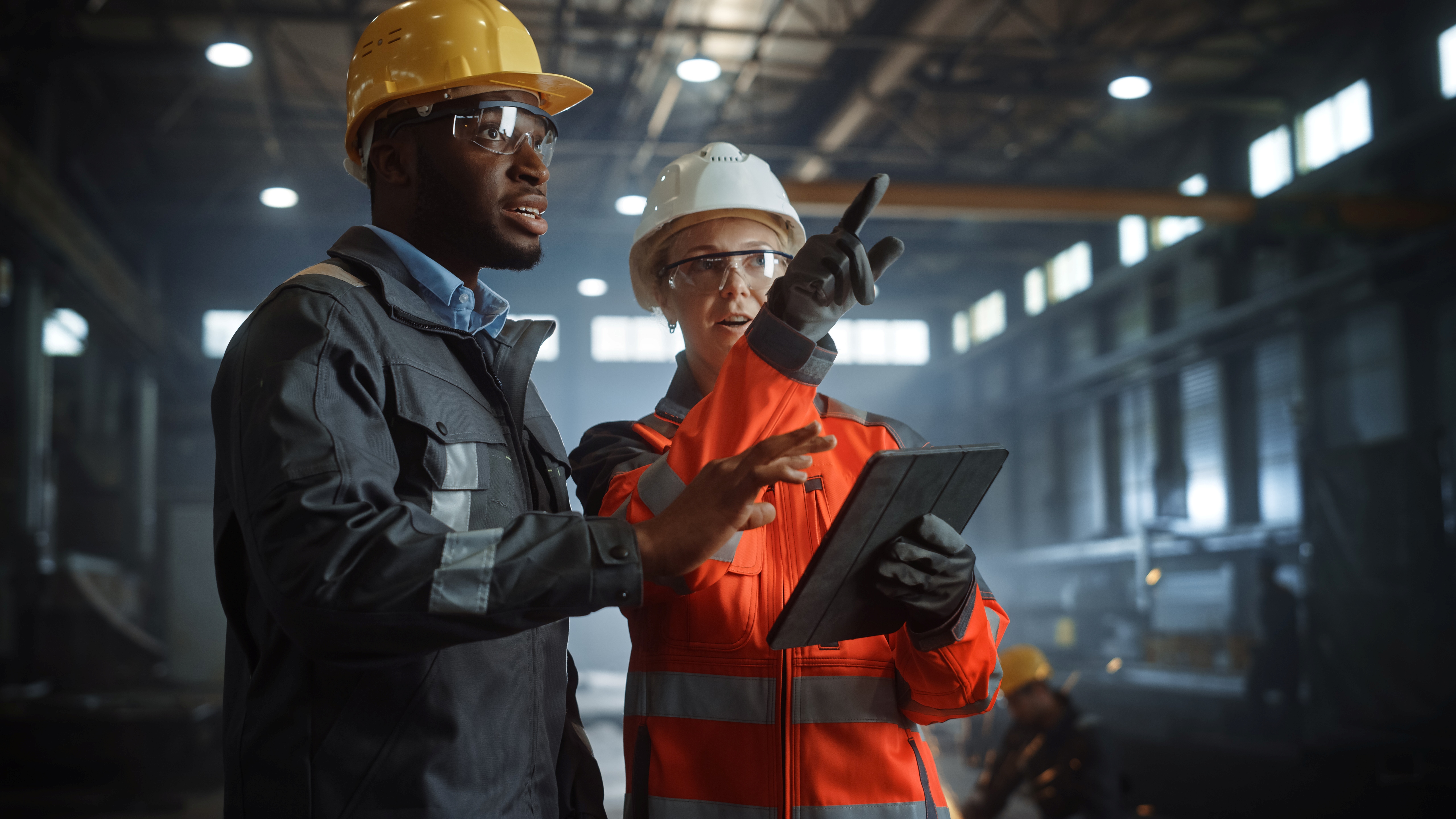

Building trust in steel: Understanding the ResponsibleSteel certification process
Steel production is one of the most emissions-intensive industries in the world. As the market shifts toward more sustainable, low-emission practices, steelmakers need a reliable way to demonstrate their performance, while steel buyers and investors need confidence in their investment and procurement decisions.
ResponsibleSteel’s independent, multi-stakeholder standard and certification programme sets the benchmark for responsible steel production worldwide. But how does it work in practice?
1. The ResponsibleSteel International Production Standard
Certification is based on the ResponsibleSteel International Production Standard, built on 13 Principles covering the full ESG spectrum from decarbonisation, water and biodiversity to labour rights, community engagement, human rights, and more.
This ensures that sustainability in steel is measured holistically, not just by emissions, giving buyers, investors, and other stakeholders a clear view of a steelmaker’s overall ESG performance.
2. Independent, third-party audits
To achieve certification, a steel site undergoes a rigorous audit by trained, independent auditors from one of ResponsibleSteel’s approved certification bodies.
Auditors assess conformity with the Principles, reviewing documentation, interviewing workers and stakeholders, and visiting the site. This ensures the process is robust, credible, and impartial, giving stakeholders full confidence in the results.
3. Major and minor non-conformities
During the process, auditors may identify opportunities for improvement, as well as non-conformities. These can be either major or minor non-conformities.
A minor non-conformity is typically a one-off or minor issue that doesn’t affect the site's capability to meet the overall objective of the relevant criterion or principle. It might be an isolated incident or something with only a limited impact on the site’s ability to operate responsibly. A site can be certified with minor non-conformities but must take steps to amend these non-conformities and demonstrate improvement during future audits.
A major non-conformity, on the other hand, is a serious issue, meaning that a site is not meeting the overall objectives of the Production Standard. This could be a single major incident or a series of smaller problems that demonstrate a systemic issue. A site with a major non-conformity cannot be certified until the issue has been properly addressed. Should a major non-conformity arise after certification, the certificate could be suspended depending on the severity of the issue.
4. Certification decisions
Audit reports are reviewed by the ResponsibleSteel team and/or an independent Assurance Panel to check whether they meet our reporting expectations and that the certification body/auditors followed the procedures outlined in the ResponsibleSteel Assurance manual.
With experience across steel, social and environmental issues, and auditing and certification, the Assurance Panel provides independent oversight. It plays a vital role in ensuring the rigour of certification decisions made by certification bodies.
Once sites are certified, their certificates are publicly listed on ResponsibleSteel’s website alongside a summary of the audit findings, providing transparency for industry stakeholders.
5. Continuous improvement
Certification is not a one-off achievement. Certificates are valid for three years, during which time sites must undergo a surveillance audit and complete the recertification process to maintain their status. Issues and complaints against the site can also be raised by stakeholders in between audits via ResponsibleSteel’s Issues Resolution Process. Depending on the severity of the problem, a special audit may be conducted by auditors.
Confidence for stakeholders
For steel buyers, investors, and other stakeholders, certification provides assurance that a steelmaker is operating at some of the highest standards in the industry across social and environmental issues. Certification helps to:
- Mitigate environmental, social, and governance (ESG) risks
- Support compliance with regulatory and reporting requirements
- Improve transparency and accountability across the supply chain
Driving progress and future-proofing business
ResponsibleSteel certification is more than a label – it’s a framework to help reduce risk and accelerate change across the value chain. By asking steelmakers about certification, buyers and investors send a clear signal that drives progress towards responsible, low-emission, and near-zero steel.
Learn more about ResponsibleSteel certification here.
Are you a steelmaker? Find out how you can begin the certification journey here.
Are you a steel buyer or investor? Learn more about how Certified Steel can support you here.


September 2025 Newsletter
The September edition of the ResponsibleSteel™ newsletter is here.
India is an essential part of the global journey towards a responsible, low-emissions steel sector. Our recent event in New Delhi, Accelerating Decarbonisation of the Steel Sector in India, marked an important milestone in our work in the region. The discussions and insights shared were invaluable, and we thank all who contributed.
We are also calling for nominations for a Board Director in the Business category, an important opportunity to help shape ResponsibleSteel’s future direction.
In this month’s newsletter, you can read about:
- Highlights from our New Delhi event
- A call for Board Director nominations
- Welcoming Instant Steel Solutions as a new member
- A member blog from Karmanterra on biocarbon in steelmaking
- Updates on the ResponsibleSteel Standard revision
- Reflections from our latest Just Transition webinar
…and more.
Read the full newsletter here.



